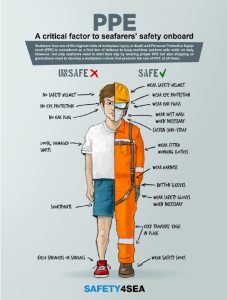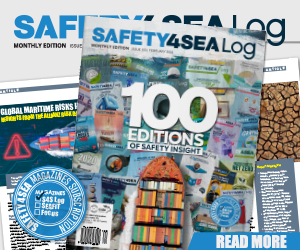TT Club, as part of their TT Talks series, tackles the subject of Personal Protective Equipment (PPE) and its overall importance on protecting crew members, underscoring the role of training on the appropriate use of PPE.
As TT highlights, following selection of appropriate PPE, it is important to ensure that workers are trained in its use. Many operations are highly complex, and it should not be assumed that workers understand why the use of PPE is important or how to wear items of PPE correctly to guard against operational hazards.
 It is equally important to ensure that workers understand the limitations of PPE. PPE is not a redundant operational control measure and workers should not bypass or circumvent other control measures while wearing it. Many jurisdictions require employers to evidence that workers have been issued with required PPE and that they have been trained in its use.
It is equally important to ensure that workers understand the limitations of PPE. PPE is not a redundant operational control measure and workers should not bypass or circumvent other control measures while wearing it. Many jurisdictions require employers to evidence that workers have been issued with required PPE and that they have been trained in its use.
Training should also cover proper care and maintenance of PPE. It is reasonable to expect workers to maintain PPE to a standard by, for example, ensuring that the equipment is clean and functional. However, it is important to communicate the standard to workers and this should form part of the training.
Even where this is not a legal requirement, a failure to keep adequate records of PPE issuance and training may lead to complications when defending against claims in court arising from workplace injuries.
… said TT
It is also reasonable to expect workers to request replacement PPE when equipment is no longer in fit condition. However, it is advisable that employers maintain some control over replacement by defining a reasonable PPE useful life, keeping records of PPE issuance and performing periodic PPE inspections.
- Focus on maintaining the supply of proper and effective PPEs onboard
- Review periodically PPE for each task (type, size, quality)
- Training on the proper use of PPEs to all people onboard is necessary
- Improve risk awareness by sharing information of common injuries
- Warning signs at the sites of potential marine safety hazards can be effective
- Promote a safety campaign on the use of PPEs at all times
Additionally, some types of PPE should be replaced after an incident even when there is no apparent damage to the equipment. For example, a hardhat that has sustained a blow should not remain in use even if there is no visible damage, TT concludes.


































































